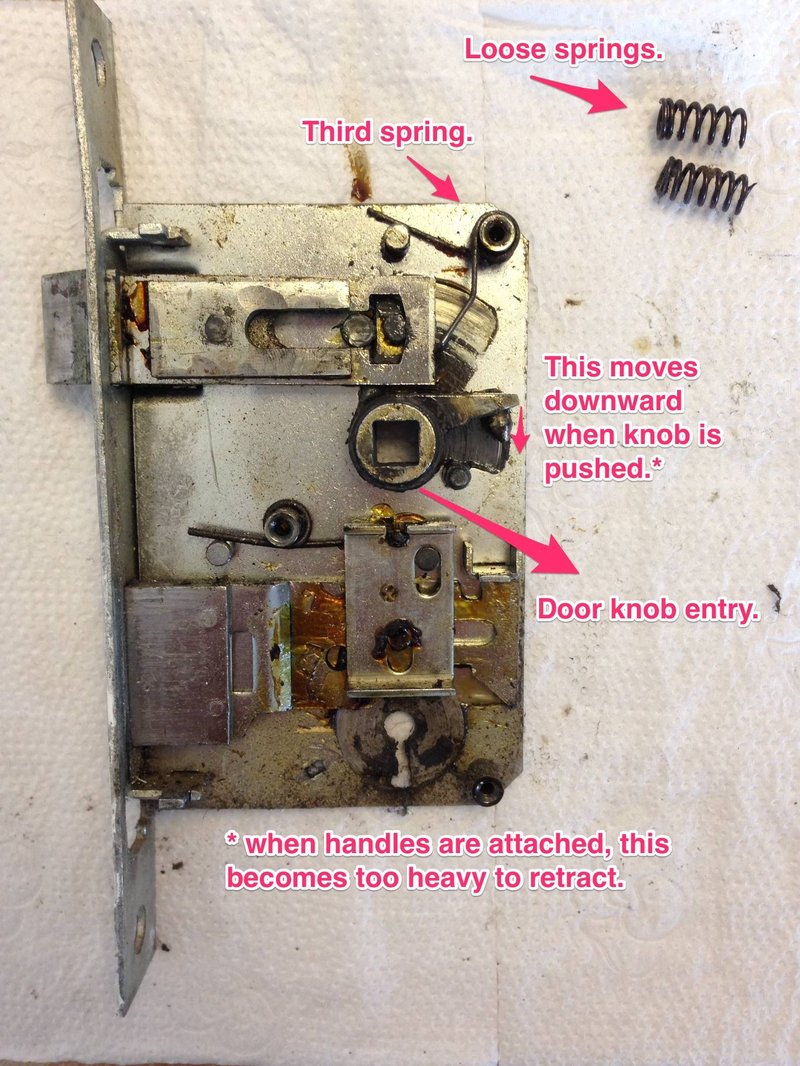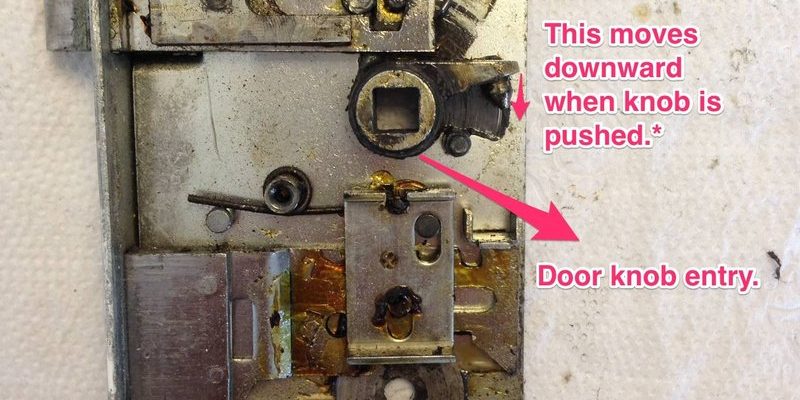
Understanding how a latch follower works is essential, especially if you’re dealing with a brand like Schlage or Kwikset. These knobs can sometimes give us trouble, and identifying the problem sooner rather than later can save a lot of hassle. So, grab a cup of your favorite brew, and let’s break this down together.
What Is a Latch Follower and Its Role?
To kick things off, let’s clarify what a latch follower is. This small, but mighty, component is a part of the door knob mechanism. When you turn the knob, the latch follower moves to either engage or disengage the latch bolt that keeps your door closed. Think of it as a gatekeeper—it either opens the gate to let you in or keeps it shut when you leave.
In a typical setup, there’s a spring that pushes the latch follower back into position. If everything is working correctly, you’ll hear a satisfying *click* as the latch falls into place. But what happens when this little part becomes worn or damaged? Well, it can lead to several common door issues, which we’ll explore next.
Signs Your Latch Follower May Be Worn Out
Identifying a worn-out latch follower isn’t always easy, especially if you’re not familiar with the inner workings of door knobs. Here are some clear signs to look out for:
- Difficulty Turning the Knob: If it feels stiff or you struggle to turn the knob, it might indicate a problem.
- No Response When Turning: If the knob turns but the door doesn’t budge, the latch follower could be disengaged.
- Unusual Noises: Listen for grinding sounds or clicks when you operate the knob. This could mean the follower is grinding against worn parts.
- Door Sticks or Gets Stuck: If your door is hard to open or close, the latch follower may not be aligning correctly.
These signs can be frustrating, especially when you’re in a hurry. The good news is that understanding these indicators can help you pinpoint the issue before it gets worse.
How to Inspect the Latch Follower
Now that you know what to look for, let’s get into the nitty-gritty of inspecting the latch follower. This process is pretty straightforward and can often be done without professional help. Here’s how you can do it:
1. Gather Your Tools: You’ll need a screwdriver, possibly a flashlight, and a cloth to clean any dust.
2. Remove the Door Knob: Unscrew the door knob from both sides. Be sure to keep screws in a safe place.
3. Examine the Latch Mechanism: Once the knob is off, take a look at the latch follower. Does it look worn or misaligned? Look for wear on the latch bolt and any springs.
4. Test Movement: Using your fingers, gently push the latch follower up and down. It should move smoothly. If it feels sticky or loose, it might be time to replace it.
This inspection step can save you a lot of time—and potential frustration—if you catch the issue early.
Common Causes of Wear and Tear
Understanding why your latch follower might be worn out can help you prevent future issues. Here are some common culprits:
- Frequent Use: The more you use a door knob, the quicker the latch follower can wear down. Regular use can lead to wear and tear.
- Environmental Factors: Changes in humidity or temperature can cause materials to expand or contract, affecting the latch mechanism.
- Quality of Materials: Cheaper door knobs with lower-quality components tend to wear out faster than more durable options.
By being aware of these causes, you can take steps to extend the life of your door knob and latch follower.
Repairing or Replacing the Latch Follower
If your inspection revealed that the latch follower is indeed worn out, you’ll need to decide whether to repair or replace it. Here’s a quick guide:
1. Cleaning and Lubricating: Sometimes a good cleaning and lubrication can fix minor issues. Use a small amount of silicone spray or grease.
2. Replacing the Part: If the latch follower is beyond repair, you can usually find replacements online or at a local hardware store. Brands like Schlage often offer compatible parts.
3. Consider a New Door Knob: In some cases, if one part is worn out, others might be close behind. If the knob is old or frequently problematic, replacing the entire assembly might be the best option.
Assess your situation carefully. Sometimes the cost of repair versus replacement can make a huge difference in the long run.
When to Call a Professional
Not everyone feels comfortable tackling door knob repairs, and that’s completely okay! If you’ve tried the above steps and the door still isn’t functioning correctly, it might be time to call in a pro. Here are some situations where a professional can help:
- Comfort Level: If you’re uncomfortable working with tools or disassembling parts, it’s best to hire someone.
- Complex Mechanisms: Some door knobs have intricate locking systems or added features that require expertise.
- Security Concerns: If your door isn’t locking properly, it’s crucial to have it fixed as soon as possible to ensure your home’s safety.
Don’t hesitate to reach out for help when you need it. It’s better to be safe and secure than to risk a DIY mishap.
Preventing Future Issues with Your Door Knob
Once you’ve identified and resolved any problems with your latch follower, you’ll want to take steps to prevent future wear. Here are some ideas:
- Regular Maintenance: Check your door knobs regularly for any signs of wear and clean them to remove dirt and grime.
- Use a Lubricant: A periodic spray of silicone can keep mechanisms moving smoothly.
- Choose Quality Products: Invest in high-quality door knobs with sturdy components. They’re more likely to last longer.
Investing a little time now can save you a lot of hassle later!
In conclusion, identifying a worn-out latch follower in a door knob doesn’t have to feel overwhelming. By knowing the signs, inspecting the mechanism carefully, and taking preventive measures, you can keep your door knobs functioning smoothly. Just imagine how satisfying it will be to turn that knob effortlessly again! If you find yourself stuck, don’t hesitate to reach out for help. You’ve got this!
